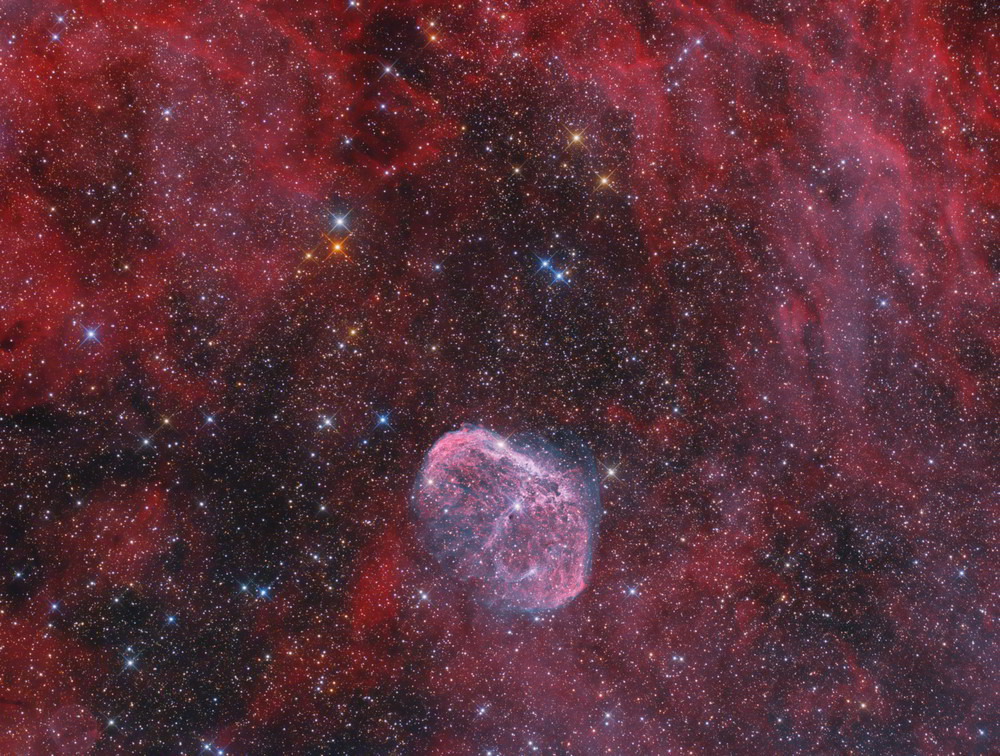NGC 6888 - The Crescent Nebula

MouseOver for object identification, Click on image for a zoomable version
|
Location / Date |
Zellerndorf, Aug-Sept 2016 |
|
Telescope / Mount / Guiding |
ASA 10" Astrograph, ASA 3" Reducer Corrector (f2.8, focal length 715 mm) |
|
Camera / Exposure |
Canon EOS 500Da: 25 x 3min
FLI ML8300, FLI CFW-2-7 Filter Wheel with Astrodon filters: Total exposure time: 6h 55min |
|
Processing |
PixInsight,Fitswork, Photoshop |
|
Notes |
The Crescent Nebula is an emission nebula in the constellation Cygnus, about 5000 light years away. Ju 1 (Jurasevich 1) or PN G75.5+1.7 is a very faint planetary nebula, also called the Soap Bubble Nebula. The nebula was discovered by the amateur Dave Jurasevich at the Mount Wilson Observatory in 2008. |